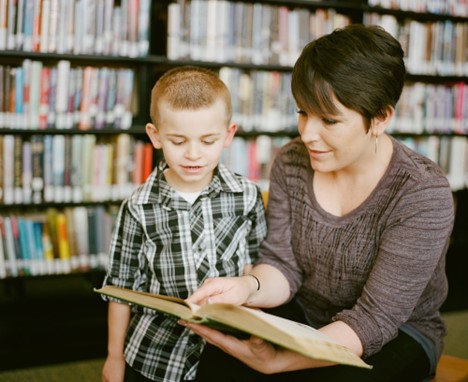Imagine if every child could tap into their potential and learn with excitement and curiosity. It’s a goal that many parents and teachers dream of. So, how can we help children love learning and excel at it? By instilling in them strong learning skills. And guess what? There are advanced educational methods that can guide us in achieving this. We’re going to delve into some of these ways, inspired by lessons from various educational courses. Let’s get started.
1. Tailoring Learning to Individual Needs
Every child is special. Each one of them learns differently. Some might love reading stories, while others might enjoy building things with their hands. Then, there are children who face challenges that make learning a bit more difficult for them.
That’s where the lessons from the online MEd in Special Education come into play. These experts understand that children with special needs have unique ways of understanding the world. So, they come up with different tools and techniques to help them. For example, some children might find it easier to learn through music or art. Others might benefit from extra time or a quieter room.
The key idea here is understanding. When teachers and parents take the time to know what a child needs, they can provide the right support. This doesn’t just help children with special needs but all children since every child is unique.
2. Building a Strong Literacy Foundation
Do you remember the joy of reading your first book or writing your first sentence? These are big milestones in a child’s life. Reading and writing are like magic keys. They open up doors to new worlds, ideas, and dreams.
Experts with an online MEd in Literacy know this well. They believe that every child should have a strong foundation in reading and writing. How? By making it fun and meaningful. By reading stories that children can relate to. Or by encouraging them to write about things they love.
Literacy is more than just recognizing words. It’s about understanding them and using them to communicate. When children find joy in reading and writing, they not only become better at it but also develop a love for learning in general.
3. Promoting Analytical Thought and Solutions
Children thrive when they’re not just memorizing facts but truly understanding and questioning them. Instead of merely accepting information, they should be trained to dissect it, weigh its merit, and draw conclusions. This kind of thinking sets the stage for deeper understanding and informed decision-making in the future.
One effective method to cultivate these skills is by posing open-ended questions to children. Questions that don’t have a straightforward answer encourage them to think from multiple angles. For instance, rather than asking them to recall a fact, challenge them with questions like, “What could be another solution to this problem?” or “How might this situation be viewed differently?”. Such questions ignite their analytical skills and prompt them to think outside the box. This approach not only enhances their learning experiences but also equips them with the tools to approach challenges with a solution-oriented mindset.
4. Integrating Technology and Modern Learning Tools
In today’s world, technology is everywhere. Kids play games on tablets, talk to family on video calls, and watch their favorite shows online. So, why not use technology to make learning more fun?
The lessons from the MEd C&L in School Library Media teach us exactly that. Libraries are not just about books on shelves anymore. They have become places where kids can explore digital resources. Imagine a child doing a project on dinosaurs. Instead of just reading about them, they can watch videos, listen to sounds, and even take virtual tours of museums.
By using technology in the right way, learning becomes more active. Kids are not just sitting and listening. They are exploring, clicking, and discovering. It keeps them more engaged and helps them remember better.
Of course, it’s important to balance screen time and make sure that kids are safe online. But when used wisely, technology can be a powerful tool for learning.
5. Creating a Positive Learning Environment
The environment around us plays a big role in how we feel and act. For children, this is even more crucial. When they are in a space where they feel safe, loved, and encouraged, they are more likely to be excited about learning.
So, what makes a positive learning environment? It’s not just about colorful posters or comfy chairs. It’s about feeling heard, respected, and supported. For instance, experts who have studied online MEd in Ed Leadership have often pointed out that effective school leadership plays a big part in this. Leaders who care make sure that every child feels important. They ensure that teachers have the resources they need. They listen when there are problems and work to find solutions. So, a school that has strong leaders often becomes a place where children love to learn.
6. Reinforcing Continuous Learning and Curiosity
Remember when kids ask, “Why?” about everything? That’s their natural curiosity at work. As they grow up, it’s important to keep that spark alive.
Every educational course, whether it’s about leadership, literacy, or library media, tells us the same thing. Continuous learning is the key. The world is always changing. New things are discovered every day. When kids are curious and eager to learn, they can keep up with these changes.
How can we encourage this? By being curious ourselves. When kids see adults asking questions, trying new things, and learning from mistakes, they want to do the same. We can also give them chances to explore topics they are interested in. Maybe they want to learn how to cook, play a musical instrument, or find out why the sky is blue. By supporting their interests, we show them that learning is not just for school. It’s a lifelong journey.
Conclusion
In sum, learning is a vital process that shapes a child’s understanding and perspective of the world. By employing these six strategies, we can make the learning experience more effective and enjoyable for them. It’s all about adapting to their needs, incorporating modern tools, and fostering genuine curiosity. When we prioritize these, we set kids on a practical path toward lifelong learning and growth.
Read Also
- Why the Keto Diet Works for Some People—and Fails Dramatically for Others: An Ayurvedic Breakdown for Modern HealthcareThe keto diet has dominated weight-loss culture for years. For some people, it produces rapid fat loss, stable energy, and improved mental clarity. For others—especially those who gain weight easily—it leads to burnout, digestive distress, rebound weight gain, high cholesterol, and a metabolism that feels slower than before. Healthcare often frames this as a discipline… Read more: Why the Keto Diet Works for Some People—and Fails Dramatically for Others: An Ayurvedic Breakdown for Modern Healthcare
- How to Choose the Best Assisted Living Facility for SeniorsAre you looking for the right assisted living facility for a senior loved one? Choosing a place can feel overwhelming. There are many factors to consider, from care services to the environment. Safety, comfort, and social opportunities play important roles in daily life. Each senior has unique needs and preferences that must be met. Understanding… Read more: How to Choose the Best Assisted Living Facility for Seniors
- Burn Smart, Not Hard; Shape Burn: Clean Protein for Weight ManagementYou want to feel light, strong, and confident. You don’t want crash diets or fake promises. You need a plan that works with your body, not against it. That’s where Shape Burn comes in. You can burn fat without losing strength. You can eat better and stay full. You can manage weight in a way… Read more: Burn Smart, Not Hard; Shape Burn: Clean Protein for Weight Management
- Creatine Basics: How Much Is 5g, How Much Water You Need, and Whether Pills or Powder Work BetterIf you’ve ever walked into a supplement aisle or scrolled through fitness TikTok, you’ve probably seen people talking about creatine — usually with a shaker bottle in hand and promises of better workouts and faster gains. And honestly? They’re not wrong. Creatine is one of the most researched and effective supplements for muscle strength, recovery,… Read more: Creatine Basics: How Much Is 5g, How Much Water You Need, and Whether Pills or Powder Work Better
- Understanding Breast Cancer in Men: Key Facts and SymptomsBreast cancer is often thought of as a disease that only affects women. However, men can develop it too. Although it is less common, early detection and awareness are important. Read on to learn key facts, symptoms, and ways men can take action to protect their health. How Common Is Breast Cancer in Men? Breast… Read more: Understanding Breast Cancer in Men: Key Facts and Symptoms






